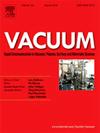碳化物对 N80 碳钢局部腐蚀影响机制的新见解:实验和第一原理研究
IF 3.8
2区 材料科学
Q2 MATERIALS SCIENCE, MULTIDISCIPLINARY
引用次数: 0
摘要
碳化物对 N80 碳钢的腐蚀行为有很大影响。碳化物的具体类型及其在钢基体界面上的吸附行为尤为复杂。本研究利用计算和实验技术全面评估了碳化物对 N80 钢局部腐蚀的影响。研究结果表明,钢中最主要的碳化物是 Fe3C,其电位差比钢基体的电位差大约 65.3 mV,导致钢基体优先溶解。钢表面形成的腐蚀膜疏松多孔,富含 Cl-,不足以有效阻止腐蚀介质的渗透。Fe3C 与钢基体之间的功函数关系为 Fe < Fe3C,O 在 Fe 表面的吸附能高于在 Fe3C 表面的吸附能。这导致了 Fe3C 和钢基体之间强烈的电偶腐蚀效应。Fe3C 作为电化学腐蚀过程中的阴极相,加速了钢表面对 O2 的吸附,进而导致钢基体的大量溶解。这一过程促进了凹坑的成核,最终在表面形成稳定的凹坑。本文章由计算机程序翻译,如有差异,请以英文原文为准。
New insights into the influence mechanism of carbides on the localized corrosion of N80 carbon steel: Experiments and first-principles study
Carbides significantly influenced the corrosion behavior of N80 carbon steel. The specific types of carbides and their adsorption behavior at the interface with the steel matrix were particularly complex. This study comprehensively evaluated the impact of carbides on the localized corrosion of N80 steel using both computational and experimental techniques. The findings revealed that the predominant carbides in the steel were Fe3C, with a potential difference of approximately 65.3 mV greater than that of the steel matrix, leading to preferential dissolution of the steel matrix. The corrosion film that formed on the steel surface was loose and porous, enriched with Cl-, and insufficient to effectively prevent the penetration of corrosive media. The work function relationship between Fe3C and the steel matrix was Fe < Fe3C, and O exhibited a higher adsorption energy on the Fe surface than on the Fe3C surface. This resulted in a strong galvanic coupling corrosion effect between Fe3C and the steel matrix. Fe3C, acting as the cathodic phase in the galvanic corrosion process, accelerated the adsorption of O2 on the steel surface, which in turn led to significant dissolution of the steel matrix. This process facilitated the nucleation of pits, ultimately resulting in the formation of stable pits on the surface.
求助全文
通过发布文献求助,成功后即可免费获取论文全文。
去求助
来源期刊

Vacuum
工程技术-材料科学:综合
CiteScore
6.80
自引率
17.50%
发文量
0
审稿时长
34 days
期刊介绍:
Vacuum is an international rapid publications journal with a focus on short communication. All papers are peer-reviewed, with the review process for short communication geared towards very fast turnaround times. The journal also published full research papers, thematic issues and selected papers from leading conferences.
A report in Vacuum should represent a major advance in an area that involves a controlled environment at pressures of one atmosphere or below.
The scope of the journal includes:
1. Vacuum; original developments in vacuum pumping and instrumentation, vacuum measurement, vacuum gas dynamics, gas-surface interactions, surface treatment for UHV applications and low outgassing, vacuum melting, sintering, and vacuum metrology. Technology and solutions for large-scale facilities (e.g., particle accelerators and fusion devices). New instrumentation ( e.g., detectors and electron microscopes).
2. Plasma science; advances in PVD, CVD, plasma-assisted CVD, ion sources, deposition processes and analysis.
3. Surface science; surface engineering, surface chemistry, surface analysis, crystal growth, ion-surface interactions and etching, nanometer-scale processing, surface modification.
4. Materials science; novel functional or structural materials. Metals, ceramics, and polymers. Experiments, simulations, and modelling for understanding structure-property relationships. Thin films and coatings. Nanostructures and ion implantation.
 求助内容:
求助内容: 应助结果提醒方式:
应助结果提醒方式:


